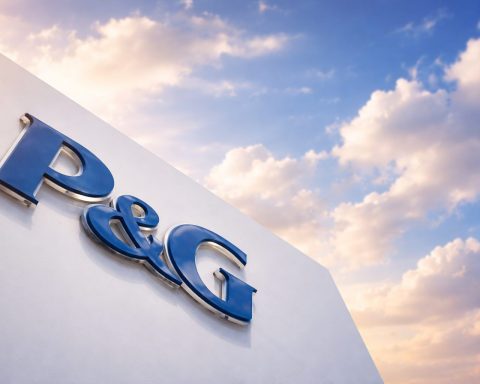- Wild week for WAL: Western Alliance Bancorp’s stock (NYSE: WAL) is hovering around $70 as of Oct. 17 after a 10% plunge on Thursday amid fresh regional bank credit fears [1]. Shares remain well below their 52-week high near $98 [2].
- Volatile swings: Earlier this month, WAL fell ~4% on Oct. 8 due to its indirect exposure to the First Brands Group bankruptcy [3]. It then rebounded mid-October on optimism from big-bank earnings, before plunging ~10–11% on Oct. 16 after disclosing a fraud-related loan issue [4].
- Analysts still bullish: Wall Street remains optimistic on Western Alliance. JPMorgan and RBC hiked their 12-month price targets to $105 and $100 respectively [5], and 13 out of 14 analysts rate WAL a “Buy” or equivalent. The consensus target price ~ $103 implies ~30% upside from current levels [6] [7].
- Earnings on deck: Western Alliance reports Q3 2025 earnings on Oct. 21. Analysts forecast $2.11 EPS on ~$891 million revenue [8] (up sharply from last quarter), and meeting these estimates could boost the stock if recent credit worries subside.
- Sector context: Big banks just posted robust Q3 results (strong trading revenue and net interest income) [9], lifting bank stocks earlier in the week. However, new loan loss revelations at a few regional lenders (e.g. Zions’ $50M charge-off, Western Alliance’s fraud case) have revived credit quality jitters [10] [11].
Western Alliance Bancorporation’s logo displayed on a smartphone screen. The regional lender’s stock has swung sharply amid recent banking sector turbulence and credit scare headlines.
Stock Price Whiplash for Western Alliance
Western Alliance’s stock price has seesawed over the past several days. After trading around $78–$79 per share in mid-October [12], WAL was caught in a roller coaster of volatility this week. The shares surged over 5% on Oct. 13 and continued climbing on Oct. 14, buoyed by strong earnings reports from major banks and improving market sentiment [13] [14]. By mid-week, Western Alliance briefly neared the low $80s. But those gains unraveled when fresh fears hit the sector. On Thursday Oct. 16, WAL plunged almost 11% intraday, sinking from the high-$70s to around $69–$70 [15] [16]. It closed near $70.32, down about $8 on the day (–10.8%). The steep drop dragged the stock roughly 28% below its 52-week high (~$98) and erased its earlier-week rally [17] [18].
The wild swings were driven by shifting headlines. Last week, news emerged that Western Alliance had indirect exposure to First Brands Group, a large auto-parts supplier that filed bankruptcy in late September. A Jefferies-managed credit fund (Point Bonita) holds about $715 million of First Brands’ receivables – raising fears that Western Alliance could face losses via its dealings with Jefferies [19] [20]. WAL’s stock fell ~4% on Oct. 8 when the First Brands headlines hit [21]. After stabilizing, sentiment improved as analysts downplayed the impact and broader bank earnings impressed (more on that below). But by Oct. 16, a new scare sent Western Alliance shares skidding again [22].
First Brands Fallout and Fraud Fears Sink Shares
The initial catalyst for Western Alliance’s October stumble was the collapse of First Brands Group, which filed Chapter 11 with an estimated $10–$50 billion in liabilities [23]. Western Alliance did not lend directly to First Brands, but the bank’s name became entangled when Jefferies (one of WAL’s partners) revealed its fund had major exposure to First Brands’ debts [24]. Essentially, First Brands had been selling its customer receivables to investors like Jefferies’ fund, and when First Brands stopped forwarding those payments, a hidden $715M hole emerged [25]. This “vanished” debt spooked investors across the regional banking space. Western Alliance’s management quickly stressed that its own loan quality remained solid – noting that its total “criticized” (at-risk) loans were actually lower at Sept. 30 than in June [26] [27]. Analysts also argued that any losses to WAL from First Brands would likely be limited and manageable [28]. One observer noted the First Brands scare, while alarming, was “unlikely to cause material losses” for Western Alliance [29]. These reassurances helped stabilize the stock for a few days.
However, another shock hit on Oct. 16. Zions Bancorp – another regional bank – disclosed a surprise $50 million loan charge-off tied to alleged fraud, sparking broader fears about hidden credit issues [30]. Almost simultaneously, Western Alliance revealed in a regulatory filing that it had initiated a lawsuit over a bad loan involving an entity called Cantor Group V, LLC, alleging the borrower committed fraud (forged real estate loan documents) [31] [32]. The loan in question was reportedly about $100 million in size [33]. While Western Alliance hasn’t taken a loss on it yet, the news rattled investors. On Thursday, regional bank stocks plunged nearly 4–5% as a group, with Western Alliance tumbling over 9% by the close [34] [35]. “It shows you can’t take credit quality for granted, and poor performing credit at one bank can drag down the group quite fast,” warned Stephen Biggar, a banking analyst at Argus Research [36]. In other words, even idiosyncratic loan problems at one or two lenders are reviving memories of past crises – investors are quick to “sell first and ask questions later” in this climate [37].
Western Alliance’s management has tried to calm the storm. The bank emphasized it has strong credit safeguards and a diversified business model, and it plans to provide full context about the issue on its upcoming earnings call [38]. Western Alliance’s filing noted that total loans and deposits remain healthy, and the bank’s capital position is strong. The alleged fraud appears to be an isolated incident involving specific borrowers, not a systemic issue [39]. “Some analysts still see the collapses as idiosyncratic and tied to individual borrowers, rather than systemic. But the cases are fueling unease,” Reuters observed [40]. Mike Mayo, a veteran bank analyst at Wells Fargo, said these cases underscore that “in times of loose credit, you are going to have more instances of fraud. Right now, credit in general is fine, but there’s a heightened need to watch the recent issues” [41].
Wall Street Analysts See Upside
Despite the turmoil, Wall Street analysts have largely maintained a bullish outlook on Western Alliance. In early October – even as First Brands’ woes emerged – analysts from JPMorgan and RBC Capitalreiterated their confidence in WAL. JPMorgan’s analyst Anthony Elian recently raised his price target to $105 (Overweight rating), citing Western Alliance’s growing deposits and net interest income as signs of strength [42] [43]. Likewise, RBC Capital’s Jon Arfstrom boosted his target to $100 and kept an Outperform rating [44]. Several other brokerages have lofty forecasts as well: for instance, TD Cowen and National Bank set targets in the $115–$118 range (Buy ratings) in late September [45]. As of mid-October, 13 out of 14 analysts covering Western Alliance rate it a “Buy” or equivalent, with a consensus 12-month price target around $103–$104 [46]. Hitting that target would mean a 30–35% gain from the current share price – a rebound to roughly the low $100s per share.
Notably, analysts aren’t ignoring the recent risks, but they largely view Western Alliance’s issues as temporary setbacks rather than fundamental problems. “Western Alliance is trading at a premium to book but still below historical valuations, [so] the stock could rebound if these fears prove overblown,” one analysis noted [47]. The bank’s earnings power remains solid: MarketBeat reports that analysts expect around $9.05 in earnings per share for full-year 2025, indicating the market may be undervaluing WAL’s profit potential [48]. Dividend investors take note as well – Western Alliance pays a quarterly dividend of $0.38 (yielding roughly 2% annually) [49], providing some income as shareholders wait for the stock to recover. So far, there’s no indication that the dividend or capital return plans will be affected by the recent turmoil.
Some experts have even argued that the First Brands/Cantor loan scares are overblown. “Jefferies’ disclosures imply any WAL losses should be unlikely to cause material losses,” a Seeking Alpha commentator observed, suggesting Western Alliance’s exposure is manageable [50]. With the stock now sitting far below analyst price targets, a number of investors see a potential buying opportunity. Indeed, insiders and institutional buyers were accumulating shares over the summer when WAL was recovering from last year’s banking scare [51]. That said, at least one outlier voice emerged recently: Wells Fargo’s analyst downgraded WAL to Underweight back on Sept. 29, reflecting lingering caution in some corners [52]. But the overwhelming majority of ratings remain positive, underpinning the view that Western Alliance’s core business is on solid footing.
Banking Sector Rally Meets Credit Jitters
Western Alliance’s recent ride must be viewed against the backdrop of a mixed broader banking picture. On one hand, the third-quarter earnings season kicked off with blockbuster results from America’s largest banks. In the past week, JPMorgan Chase, Bank of America, Wells Fargo, Morgan Stanley, and others trounced earnings forecasts, reporting surging trading revenues, strong loan growth and resilient consumer spending [53] [54]. These reports bolstered confidence in the banking sector. In fact, on Oct. 13–14, regional bank stocks including Western Alliance rallied in sympathy, as investors saw evidence that higher interest rates are still translating into robust bank profits (via fat net interest margins and revived investment banking activity) [55]. “Overall, the strong reports from these financial giants suggest a healthy pickup in corporate activity and trading,” noted StockStory after big banks’ results beat expectations [56]. Even Fed Chair Jerome Powell added optimism by hinting the Fed might ease up on tightening, which would relieve pressure on banks and the economy [57].
On the other hand, the sector’s fragility quickly resurfaced with the isolated fraud and credit issues at a couple of regional players. The late-week selloff demonstrated that investor nerves are still raw from the banking turmoil earlier in 2023. “While this was an ostensibly isolated story at two banks each with less than a $10 billion market cap, the event drew inevitable comparisons to the regional bank stress that followed the collapse of Silicon Valley Bank in 2023,” said Jim Reid, a strategist at Deutsche Bank [58]. In other words, any hint of “cockroaches” in bank loan portfolios – to borrow JPMorgan CEO Jamie Dimon’s term for hidden credit problems – can send the market into risk-off mode [59] [60]. The KBW Regional Bank Index fell nearly 6% on Thursday [61], and safe-haven assets like gold spiked to record highs as investors sought cover [62] [63]. This volatility highlights a split in market sentiment: fundamentals (earnings and balance sheets) for many banks look strong, but sentiment is easily swayed by any sign of trouble in the credit markets.
Crucially, Western Alliance’s fundamentals appear stronger than many peers, which could help it weather these storms. The Phoenix-based lender has been growing its loan book (especially in tech and venture banking niches) and expanding deposits after the spring 2023 regional-bank scare. It also boasts a solid capital ratio and liquidity position [64]. In fact, Western Alliance is nearing $100 billion in assets, which analysts note could ease some regulatory burdens once crossed [65]. These positives get lost in the noise when fear grips the market. “Already grappling with stretched stock valuations in the AI space, a potential government shutdown, and geopolitical tensions, investors were exposed to a new source of concern in the form of bad loans at US regional banks,” observed Richard Hunter of Interactive Investor, commenting on this week’s conflux of worries [66]. In short, macro worries and one-off incidents are overshadowing what has otherwise been a period of solid performance for banks. If those worries prove fleeting, bank stocks – Western Alliance included – could regain favor quickly.
Outlook: Earnings Could Be a Turning Point
All eyes now turn to Western Alliance’s third-quarter earnings, scheduled for release after markets close on Tuesday, Oct. 21 [67]. This report is shaping up to be a make-or-break moment for the stock’s near-term trajectory. Analysts expect Western Alliance to post roughly $2.11 in earnings per share on about $891 million in revenue [68]. If achieved, those numbers would represent strong growth from Q2 (which saw $1.91 EPS on $718 million revenue) [69] and a solid jump year-over-year. The bank’s profitability is benefiting from higher interest income and loan growth – trends likely to continue into Q3. Crucially, management will likely address the First Brands and Cantor loan issues on the earnings call. Western Alliance has already indicated it will provide “context about its diversified business model and strong credit structures” alongside the results [70]. Investors will be listening for any updates on potential losses (or recoveries) related to those loans, and for reassurance that the bank’s credit monitoring is rigorous. If the company quells fears and delivers in-line or better earnings, it could catalyze a relief rally in WAL’s stock [71] [72].
Market commentators suggest that Western Alliance’s sell-off may be overdone if these loan problems remain contained. “If WAL meets or beats estimates and management downplays credit concerns, analysts expect the stock to climb,” according to a TS² Tech report this week [73]. The bank’s core earnings power – and the fact that its “criticized” loans actually fell last quarter [74] [75] – support the case that Western Alliance can bounce back once panic subsides. Some analysts see WAL returning to the low $100s in a positive scenario [76], which aligns with the consensus price targets discussed earlier. Indeed, Western Alliance’s CEO and CFO have navigated past challenges (including the spring regional bank crisis) adeptly, and they will aim to restore confidence in the coming days.
That said, risks remain on the horizon. If Western Alliance’s earnings report were to reveal any surprise losses or deteriorating loan metrics, it could further spook investors. Likewise, a broader economic slowdown or new shocks in the credit market could weigh on all bank stocks, WAL included [77]. The next few weeks will be pivotal in determining whether Western Alliance’s October swoon was a short-term overreaction or a sign of deeper issues. For now, many experts are leaning toward the former interpretation: the recent exposure issues “appear overblown,” and Western Alliance’s solid fundamentals suggest the stock has significant upside if it can clear this cloud [78]. As Argus analyst Stephen Biggar put it, the key will be avoiding any new cockroaches in the credit pantry – if Western Alliance can do that, patient investors may be rewarded with a swift rebound in WAL’s stock over the coming quarter.
Sources: Reuters; TS2 Tech; Yahoo Finance; MarketBeat; Seeking Alpha; The Guardian; Western Alliance investor filings [79] [80] [81] [82]. All information is current as of Oct. 17, 2025.
References
1. www.reuters.com, 2. ts2.tech, 3. ts2.tech, 4. www.reuters.com, 5. ts2.tech, 6. ts2.tech, 7. ts2.tech, 8. ts2.tech, 9. ts2.tech, 10. www.reuters.com, 11. www.theguardian.com, 12. ts2.tech, 13. markets.financialcontent.com, 14. markets.financialcontent.com, 15. www.reuters.com, 16. www.benzinga.com, 17. ts2.tech, 18. ts2.tech, 19. ts2.tech, 20. ts2.tech, 21. ts2.tech, 22. ts2.tech, 23. ts2.tech, 24. ts2.tech, 25. ts2.tech, 26. ts2.tech, 27. ts2.tech, 28. ts2.tech, 29. ts2.tech, 30. www.reuters.com, 31. www.reuters.com, 32. www.benzinga.com, 33. www.theguardian.com, 34. www.theguardian.com, 35. www.benzinga.com, 36. www.reuters.com, 37. www.reuters.com, 38. www.reuters.com, 39. www.reuters.com, 40. www.reuters.com, 41. www.reuters.com, 42. ts2.tech, 43. ts2.tech, 44. ts2.tech, 45. ts2.tech, 46. ts2.tech, 47. ts2.tech, 48. ts2.tech, 49. www.investing.com, 50. ts2.tech, 51. ts2.tech, 52. finviz.com, 53. markets.financialcontent.com, 54. ts2.tech, 55. markets.financialcontent.com, 56. markets.financialcontent.com, 57. markets.financialcontent.com, 58. www.theguardian.com, 59. www.reuters.com, 60. www.reuters.com, 61. www.reuters.com, 62. www.theguardian.com, 63. www.theguardian.com, 64. ts2.tech, 65. ts2.tech, 66. www.theguardian.com, 67. ts2.tech, 68. ts2.tech, 69. ts2.tech, 70. www.reuters.com, 71. ts2.tech, 72. ts2.tech, 73. ts2.tech, 74. ts2.tech, 75. www.reuters.com, 76. ts2.tech, 77. ts2.tech, 78. ts2.tech, 79. www.reuters.com, 80. ts2.tech, 81. www.reuters.com, 82. www.theguardian.com









